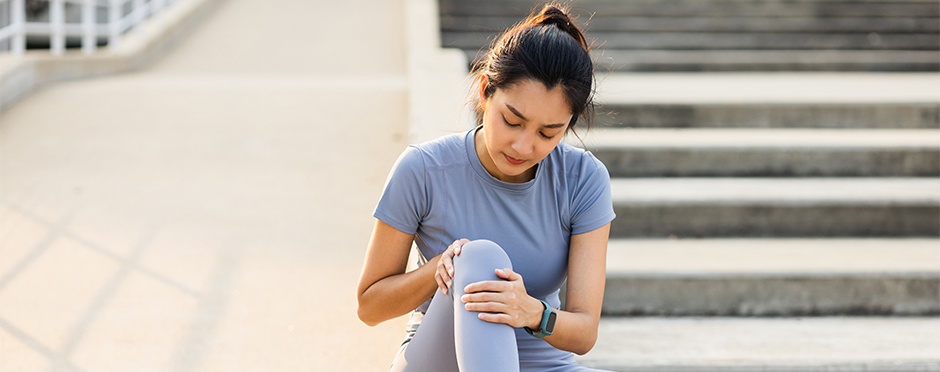
4 Tips For Knee Pain That Help Runners Go The Extra Mile
Leave a CommentRunners are some of the most motivated and driven athletes we encounter in the physical therapy world. Most of the time, this is great, but sometimes, they push through aches and pains until they turn into injuries. A common complaint we hear in runners is knee pain. Although pushing through some pain is okay, it should never limit your performance. Here are a few proactive ways to avoid knee pain and go that extra mile.
1. Footwear
Let’s start from the ground up. Our feet carry us every step we take. When we don’t wear proper shoes, compensations can occur, and aches and pains can move up the chain into our knees. No runner is the same when it comes to footwear. Ask yourself these questions when it relates to your shoes:
- Where do you run? Do you run on the road, sidewalk, trails, or all the above?
- How much cushion do you prefer under your feet?
- What sort of support feels the best?
- Are your feet pronated (facing downwards) or flat? Are your feet supinated (facing upwards), or do you have a high arch? Or are your feet somewhere in between?
Shoe salespeople are very educated, especially depending on where you shop. Discuss these answers with them along with your physical therapist. It’s always a good idea to bring in your current running shoes so they can assess your wear and tear to fit you better for your next pair.
2. Dynamic Warm Up
A dynamic warmup promotes mobility, flexibility, stability, and muscle engagement before your run. It helps target the joints and muscles you’re going to use. It also helps increase blood flow, allows oxygen to circulate through the tissues, improves mobility, and improves performance. It also helps reduce overall injury risk. You can ask your physical therapist or coach to help create a dynamic warm-up that targets your weaknesses to avoid pain further.
Dynamic Warm Up Ideas:
- High knees
- Walking lunges
- Skipping
- Toe touches
3. Hip Strengthening
Improving hip strength allows athletes to move more efficiently, utilizing less energy. The joint helps absorb the forces associated with running when the foot hits the ground repetitively. Hip and core strength is the foundation for improved biomechanics.
Hip Strengthening Ideas:
- Band walks
- Lateral step-ups
- Single-leg RDLs
4. Rest And Recovery
Muscles and tissues are meant to adapt to strenuous exercise. The muscles undergo stress and damage when pushed. The tissues rebuild and adapt to withstand greater stresses when they go through the healing process. Rest and recovery are necessary to ensure proper healing to promote growth and strengthening During this healing time, your tissues need good nutrients, rest, and water. It’s important to break down the tissues to challenge the muscles, but if you don’t allow for proper healing, that’s when injuries are likely to occur.
The biggest challenge is to differentiate between aches and pains and injuries. These four tips can help you avoid those pains and continue reaching your goals. If you have any questions or need help with footwear, warmups, or hip strengthening, reach out to Athletico Physical Therapy to get set up with a therapist who can help you.
The Athletico blog is an educational resource written by Athletico employees. Athletico bloggers are licensed professionals who abide by the code of ethics outlined by their respective professional associations. The content published in blog posts represents the opinion of the individual author based on their expertise and experience. The content provided in this blog is for informational purposes only, does not constitute medical advice and should not be relied on for making personal health decisions.
